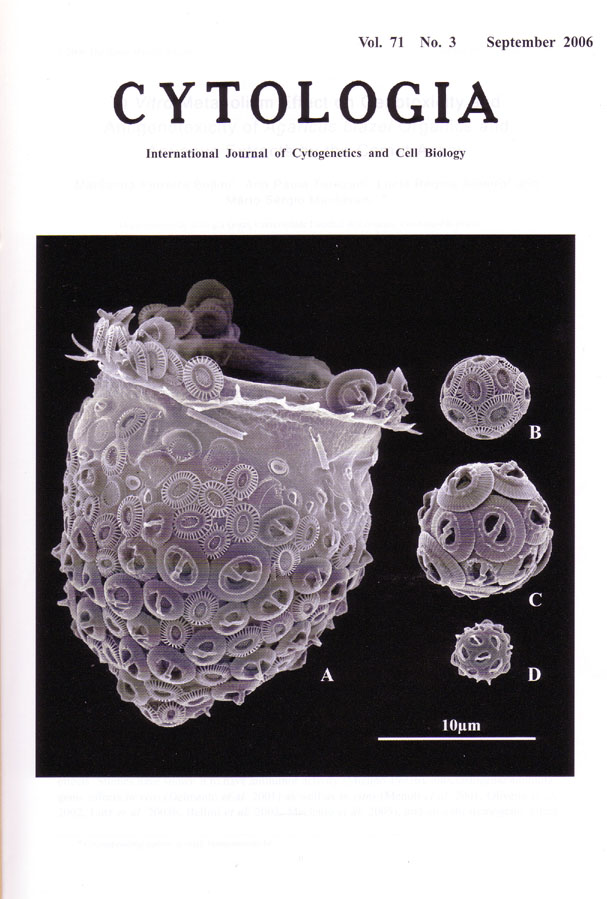| ON THE COVER |  |
|---|---|
| Vol. 71 No.3 September 2006 | |
| Technical note | |
|
|
|
| Codonaria oceanica(A), the protistan recycler. This kind of oceanic tintinnid ciliate agglomerates
adscititious substrates and builds vase-shapcd covering called lorica.
This species tend to harness exterior coverings of their prey, especially
of coccolithophorids (B-D), Emiliania huxleyi (B). Gephyrocapsa oceanica (C), and G. ericsonii (D). Coccolithophorids are major marine phytoplankton characterized by
having a unique cell covering referred to as the coccolith, which consists
of calcium carbonate crystals. Coccoliths are formed in the Golgi cisternae
or Golgi-derived vesicles, and are said to havc several roles; e.g, as
a buffer zone, cell protection, weight adjustment, and even as a CO2 storage. They would avail not only coccolithophorids themselves but also predators as elaborate construction materials. Bar: 10µm For scanning electron microscope (SEM) observations, natural seawater samples collected from surface watcr at Miyake Island (Tokyo, Japan) were placed and dried on a 1.0µm pore size filters (Isopore Membrane Filters, Milliporc, Bedford. MA, USA). The filters were mounted on specimen stubs and then coated with platinum/palladium with an ion-sputter E102 (Hitachi, Tokyo, Japan). Specimens were observed by field emission SEM, JSM-6330F (JEOL, Tokyo, Japan) at 5.0 kV. (Masaki Yoshida, Research Information Center for Fxtremophile, Rikkyo University, 3-34-1 Nishi Ikebukuro, Toshima-ku, Tokyo 171-8501, Japan) |
|